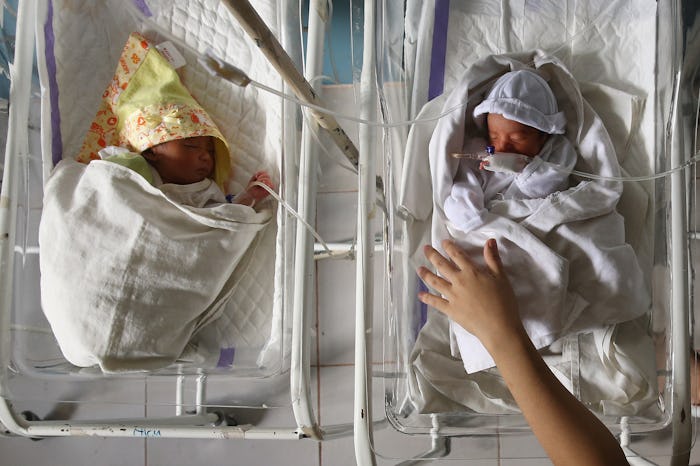Life

"Artificial Womb" Could Help Premature Babies
Premature babies are frequently kept in incubators after they're born in order to survive. Though vital, this is still a shocking difference from the comforts of a mother's uterus. So what if there was another option? Scientists' newly-developed "artificial womb" could help premature babies in the future by mimicking pre-birth conditions a little more closely. This would allow babies to develop a bit more, both quickly and safely.
Thus far, the artificial womb has only been used on lambs. Still, the results are fascinating. The "womb," consisting of a "plastic bag filled with artificial amniotic fluid," has allowed the lambs to develop for four straight weeks. In this amount of time, lambs' brains and organs continued to grow properly, their fur coats emerged, and they were even able to open their eyes.
So how do the "wombs" work? As mentioned, the bags are filled with an artificial amniotic fluid that circulates through the bag. In order for the being to receive blood and oxygen, the fetus' own heart pumps its own blood through a non-mechanical oxygenator circuit.
It all sounds very space-age, doesn't it? The idea of small, living things growing inside of bags feels (and looks) a bit strange, to be sure. Still, the research could help increase the lifespans of premature babies. "If we can develop an extra-uterine system to support growth and organ maturation for only a few weeks," noted Dr. Alan Flake, the director of the Children's Hospital of Philadelphia where the research is taking place, "we can dramatically improve outcomes for extremely premature babies."
The gif below shows a lamb moving in one of the artificial wombs. Notice the sac it's contained in as well as the black cord that connects the lamb to the oxygenator:
Advantages over current ventilation techniques are many. Currently, premature babies are commonly treated with gas-based ventilations. These methods, study co-author Emily Partridge explained, "impair lung development, causing lifelong health issues" in premature babies. By remaining submerged in fluid, these issues could be eliminated.
Applying this technology to premature babies could happen sooner than you might think. Researchers posit that within three to five years, they'll be able to start testing the artificial wombs in humans. Many might be terrified about how gruesome the setting might look for parents, but scientists already have these concerns in mind. Flake said that the image of "fetuses hanging on the wall in bags" is way off. "That’s not the way this human device will look or work," he insisted, ultimately vowing that the end result will be "parent-friendly."
Researchers are still fine-tuning the "wombs." In addition to figuring out what the final device will look like and the ethics (particularly, how old a fetus must be in order to undergo life in an artificial womb) surrounding its use are just a couple of the quandaries facing scientists who, again, are working to be "parent-friendly." To any extent, healthier premature babies are the most "parent-friendly" phenomenon possible. For families of premature babies, these "wombs" could be a huge help, both in the present and the future.